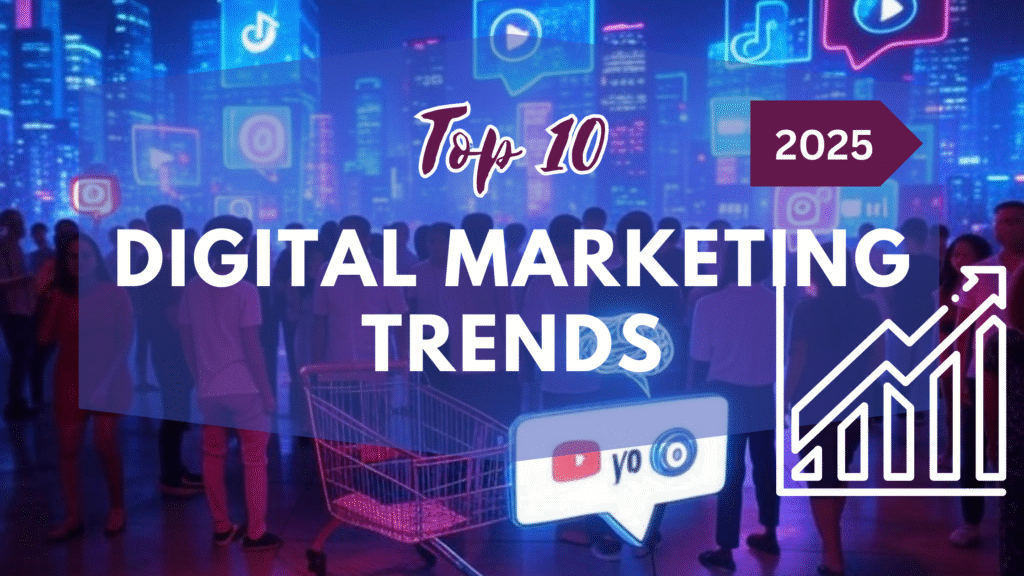Introduction
Content marketing in 2025 is transforming with interactive storytelling, AI-driven personalization, and a growing emphasis on sustainability. As long-form content gains traction for deeper engagement, brands are aligning with consumer values to build loyalty. This guide explores why content marketing matters, offers actionable strategies, and highlights key trends for 2025. Targeting high-searched keywords like “content marketing,” “interactive storytelling,” “AI personalization,” and “sustainability in marketing,” this blog equips marketers to create impactful content strategies.
Why Content Marketing Matters
Content marketing remains a cornerstone for building trust and engagement, with notable trends shaping its 2025 landscape:
-
AI personalization is expected to enhance content relevance by 25%, improving engagement rates by 30% (Smart Insights).
-
Interactive storytelling, such as quizzes or immersive narratives, increases time-on-page by 40% (Search Engine Journal).
-
Long-form content (1,200+ words) generates 50% more leads than shorter pieces, fostering deeper connections (Search Engine Journal).
-
65% of consumers prefer purpose-driven content, particularly around sustainability, influencing purchasing decisions (Exploding Topics).
-
Content marketing drives 3x more leads than traditional advertising, with a 60% lower cost (Smart Insights).
These trends highlight content marketing’s role in delivering value and building lasting relationships.
Key Strategies for Content Marketing Success in 2025
To revolutionize content marketing, brands must integrate innovation and purpose. Below are seven actionable strategies:
1. Embrace Interactive Storytelling
Interactive formats like quizzes, polls, or immersive storytelling increase time-on-page by 40%, keeping audiences engaged (Search Engine Journal).
-
Why It Matters: Interactivity enhances user experience and retention.
-
Actionable Step: Create an interactive quiz using Outgrow to engage readers on your blog.
2. Leverage AI for Personalization
AI tools analyze user data to deliver tailored content, boosting engagement by 30% through personalized recommendations (Smart Insights).
-
Why It Matters: Personalization drives relevance and conversions.
-
Actionable Step: Use HubSpot to implement dynamic content based on user behavior.
3. Create Long-Form Content
In-depth articles (1,200+ words) generate 50% more leads by providing value and establishing authority (Search Engine Journal).
-
Why It Matters: Long-form content builds trust and improves SEO.
-
Actionable Step: Write a comprehensive guide using Yoast SEO to optimize for search engines.
4. Focus on Sustainability
65% of consumers favor brands with purpose-driven content, especially around sustainability and eco-friendly practices (Exploding Topics).
-
Why It Matters: Purpose aligns with consumer values, boosting loyalty.
-
Actionable Step: Publish a blog post highlighting your brand’s sustainability efforts with visuals created in Canva.
5. Optimize for Engagement
Incorporate visuals, infographics, and clear calls-to-action (CTAs) to retain readers, with 20% higher engagement for visual-heavy content (Smart Insights).
-
Why It Matters: Engaging content reduces bounce rates.
-
Actionable Step: Design an infographic with Piktochart to complement your article.
6. Distribute Across Channels
Promoting content on social media, email newsletters, and forums increases reach by 35%, ensuring broader visibility (Search Engine Journal).
-
Why It Matters: Multi-channel distribution maximizes exposure.
-
Actionable Step: Share your content via Buffer to schedule posts across platforms.
7. Measure and Refine with Analytics
Tracking metrics like time-on-page, shares, and conversions helps refine strategies, with 25% better performance from data-driven adjustments (Smart Insights).
-
Why It Matters: Analytics ensure continuous improvement.
-
Actionable Step: Use Google Analytics to monitor content performance and adjust based on insights.
Comparing Content Marketing Tools
|
Tool |
Key Feature |
Best For |
|---|---|---|
|
Outgrow |
Interactive storytelling |
Engaging content |
|
HubSpot |
AI personalization |
Dynamic content |
|
Yoast SEO |
Long-form optimization |
SEO performance |
|
Canva |
Sustainability visuals |
Purpose-driven content |
|
Piktochart |
Engagement visuals |
Infographic creation |
|
Buffer |
Multi-channel distribution |
Content promotion |
|
Google Analytics |
Performance tracking |
Data-driven refinement |
Case Studies
-
Patagonia’s Purpose-Driven Content: Patagonia’s sustainability-focused blog posts increased brand loyalty by 20% (Exploding Topics).
-
HubSpot’s Long-Form Success: HubSpot’s in-depth guides generated 55% more leads, establishing thought leadership (Smart Insights).
Challenges and Considerations
Content marketing faces challenges:
-
Content Overload: Stand out with unique angles; focus on niche topics.
-
Resource Intensity: Long-form content requires time; use AI tools to assist.
-
Engagement Gaps: Interactive elements need testing; monitor user feedback.
Address these by targeting specific audiences, leveraging AI, and refining based on analytics.
Conclusion
Revolutionizing content marketing in 2025 requires embracing interactive storytelling, AI personalization, and sustainability to engage and retain audiences. Long-form content and multi-channel distribution further amplify impact. Start with an interactive piece, integrate purpose-driven themes, and track performance. With these strategies, you’re set to lead in the evolving content marketing landscape.


